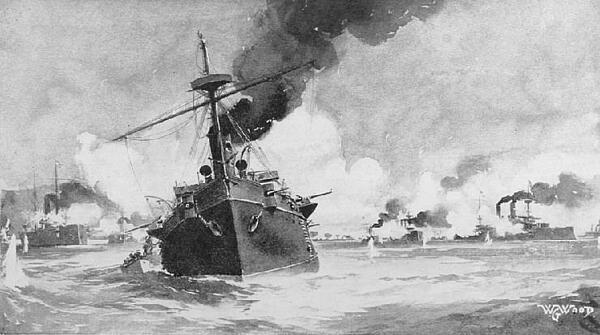The Spanish-American war
A year before the Philippine revolution began, a similar revolution broke out in Cuba. As in the Philippines, this was prompted by the country’s desire to stand against the rule of the Spanish, who had occupied the territory since 1492. After three years of hard work from the locals, the country became independent in 1898. However, they couldn’t have done so without the help of the United States.
There were a number of reasons why the US took such an interest in the protection and support of Cuba. This was partly due to the American belief in freedom and democracy, but was also the result of stories of mistreatment of Americans in Cuba, as well as the country’s own financial interests in the island nation.
Following the success of the US and Cuba in defeating the Spain, Assistant Secretary of the Navy Theodore Roosevelt decided that the US should encourage a war between them and the Spanish in order to strengthen the Navy. He initiated his plan by ordering Commodore George Dewey to travel to Asia and attack Manila Bay, targeting the Spanish fleet as he did.
As expected, Spain protested against the interference of the US. However, with struggles in Cuba and the Philippines (on account of the revolution) already tying up many of the empire’s assets, Spain was not in the position to make the United States its enemy and attempted to get them back on side.
Sadly for US-Spanish relations, tensions in Cuba in February 1898 led to the American warship Maine being destroyed and 260 people were killed. It was never proved that Spain had been responsible for the event, but nevertheless it resulted in war being declared.

On 1st May 1898, Dewey and his fleet demolished the Spanish forces in Manila Bay and Cavite, taking control of the many parts of the archipelago by June. As a result of this, the Philippine revolutionists were able to issue the Philippine Declaration of Independence on 12th June.
Once the declaration was issued, Spain was on its last legs. Filipinos and US forces stormed Manila and the Spanish governor-general agreed to hand over command of the country to the Americans if they staged a mock battle. The Battle of Manila took place on 13th August 1898 and resulted, as planned, with American taking command of Manila.
With no forces left to spare, the Spanish were eventually forced to stand down and in December the Treaty of Paris was signed. Under the treaty, Guam, Puerto Rico and the Philippines were all given to the United States for the sum of $20 million. This action formally ended Spanish rule in the Philippines.
MLA Citation/Reference
"The Spanish-American war". HistoryLearning.com. 2025. Web.
